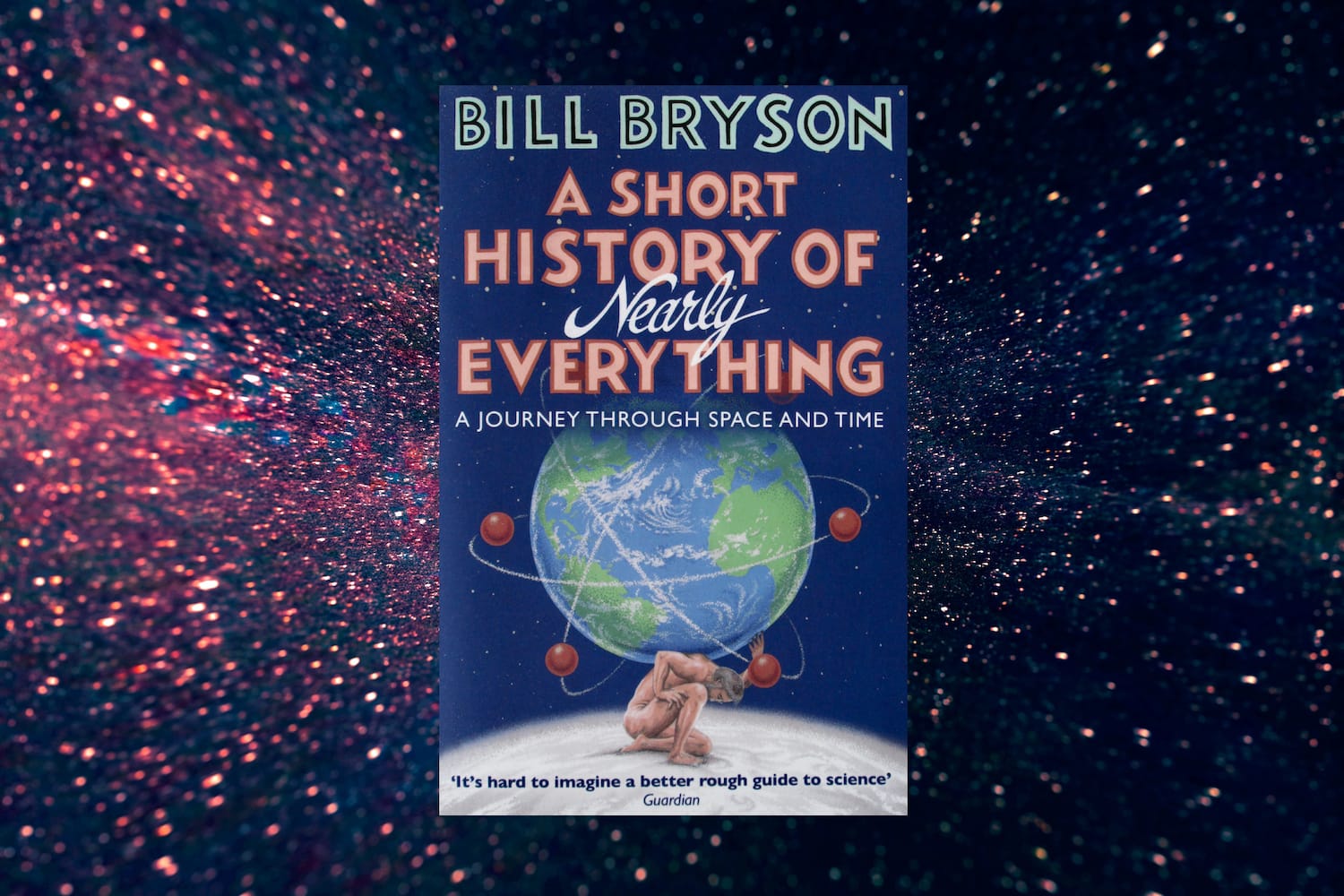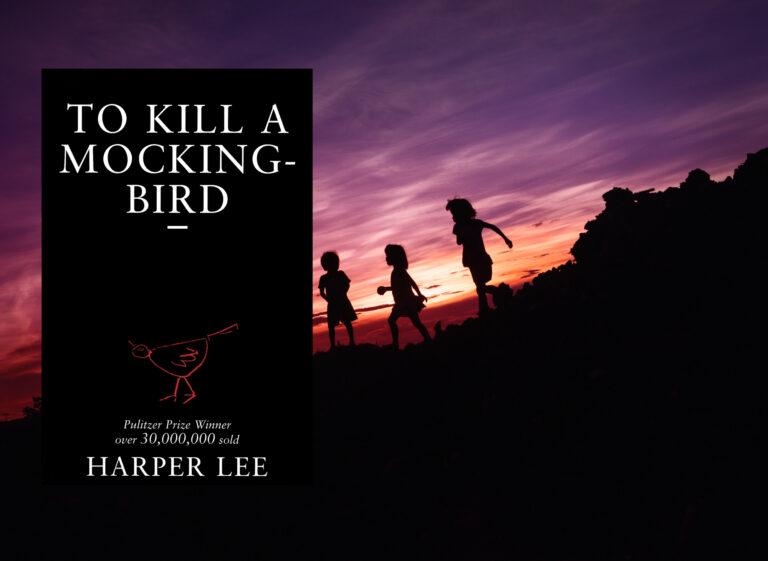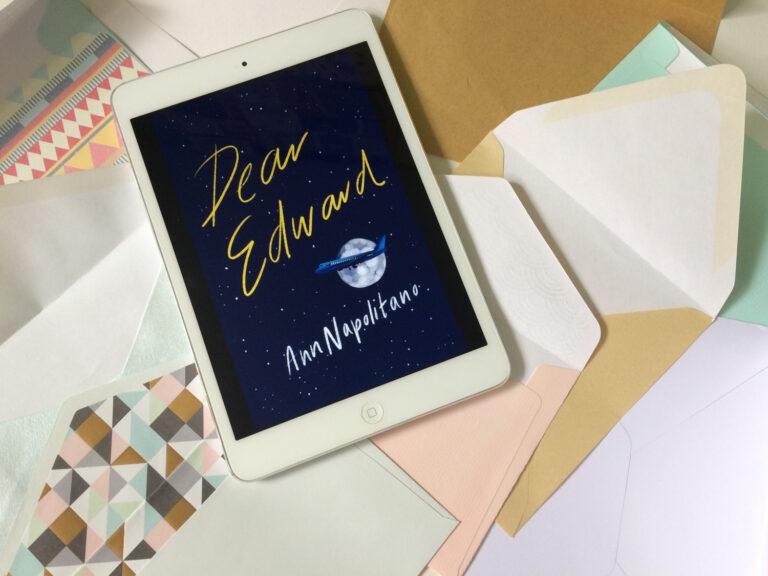Divided into six digestible sections, the writing feels like that of a Charles Dickens; with heroes, villains and misunderstood scientists, leaving you to ask – Please, sir, I want some more. Unsurprisingly, Bill Byron’s A Short History of Nearly Everything covers a variety of topics, ranging from gravity, astronomy, diseases, geology and a heck of a lot more besides. There’s clams on mountain tops, an explanation of atoms, chemistry, water (inc the possibility of 30 million species of sea life, many of which are still waiting to be found), the beginnings of life, taxonomy, botany, glaciation, hominids and cells, but that’s just a few of my favourite things. It really is a short history of nearly everything.
There’s no shortage of interesting facts in Bill Bryson’s exciting exploration of our world; the unusualness of our star system in having just one star; organisms that can survive in a nuclear reactor; or that a thunderstorm can contain enough energy to power the USA for four days. But there are also shocking moments where science got it wrong. The reader shown in equal measure society’s mistakes, people’s bias, and the cruelty of peers to reject an image that didn’t fit with their own. However, there’s also our ability to learn, and though not all figures within science were kind-hearted, and one in particular springs to mind (his wife should have poisoned the dinner she was sent to cook!) Still, all of these people contributed to uncovering the workings of history, and the rareness of our world to even exist.
A great deal of sciences’ history is told through the important, famous and underappreciated figures within science, but not all of them are scientists – showing that with passion, skill and determination the secrets of our world are no longer limited to the wealthy elite, as it once was. Alongside these historical and present-day figures are many a personal extract, for example; Mary Anning was the inspiration for the tongue-twister of selling sea-shells, Karl Schelle a taste-testing explorer of chemistry, while Charles Lyell had some unusual postures; ‘Often when lost in thought he would sink so low in a chair that his buttocks would all but touch the floor.’ There are many, many more including Albert Einstein, Isaac Newton, Ernest Rutherford, Carl Linné, and Charles Darwin, who of course deserves and gets a chapter much to himself, but its far more illuminating than most. Telling his background along with his strengths and foibles, Bryson dismembers the myths and tells us far more about him and his work than the discovery that launched his name.
Every page of A Short History of Nearly Everything reveals something new, but don’t be fooled into thinking it’s merely a fun filler of facts – yes many will astound – but instead Bryson seeks to explain the science and history of everything (ish) in a clear and engaging manner. Riveting you to the spot, whilst providing digestible information in a way that avoids being patronising. As such you feel the full effect of what’s being said, especially in his deconstructing of earth’s existence, and in doing so shows just how briefly humans have existed – which both shocks and grounds you.
What’s possibly most surprising however, is that much of our scientific knowledge has only recently been discovered, leaving you to wonder what will we find out in our lifetimes? Of course with science advancing some lines or queries in the book are outdated; ‘The Higgs Boson may or may not exist’ which we now know they do. However, these are very small when compared to the sheer magnitude of the book, culminating in all the wondrous species our planet has created, and how these are now being destroyed by one of these very creations itself; humans. In emphasising and explaining the rarity of earth, Bryson shows how it should be treasured, and not mistreated.
The benefit of being written by a non-scientist is that it’s also explained this way, though that’s not to say Bryson didn’t utilise expert opinion. His acknowledgement section and fantastic references showing the many clever minds that contributed to a book full of “….the wonder and accomplishments of science at a level that isn’t too technical or demanding, but isn’t entirely superficial either.” The objective of Bryson’s book is achieved to great success, and with the accompaniment of stunning illustrations to each section, and a brilliant timeline that features a certain Bill Bryson (his stylistic wit and humour never lacking far from its pages).
In A Short History of Nearly Everything the reader is shown the world’s information afresh, all while instilling the same childhood emotions Bill Bryson felt when looking at the complexity of Earth; ‘how did we end up with a sun in the middle of our planet and how do they know how hot it is? And if it is burning away down there, why isn’t the ground under our feet hot to the touch?’ My feet now firmly raised as I wonder why I never thought of these questions? And what is the answer? Patience not a virtue but a torture device, but at least Bryson doesn’t keep you hanging.
Other Notable Works by Bill Bryson:
- The Body: A Guide for Occupants 2019
- One Summer: America, 1927 2013
- At Home: A Short History of Private Life 2010
- A Really Short History of Nearly Everything 2008
- The Life and Times of the Thunderbolt Kid 2006
- Walkabout: A Walk in the Woods & Down Under 2002
- Bill Bryson: The Complete Notes 2000
- In a Sunburned Country 2000
- A Walk in the Woods: Rediscovering America on the Appalachian Trail 1998
- Notes from a Small Island 1995
Book Edition Information:
Publisher: Transworld Publishers (part of Penguin Random House)
ISBN: 9781784161859
Presented Edition: 2016 paperback
Cover Design & Text Illustrations: Neil Gower
Background image courtesy of Billy Huynh on Unsplash











